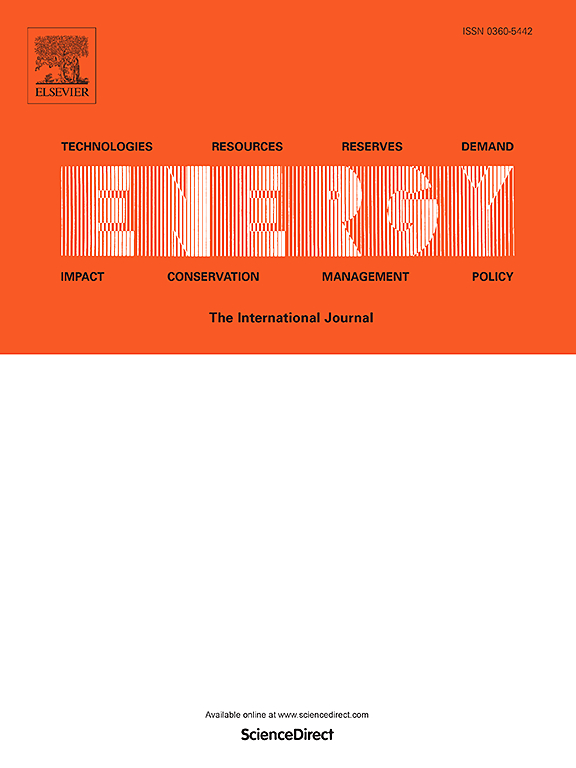Investigation on formation, evolution, and performance impact of mixing layer in the zeotropic mixture ejector
IF 9
1区 工程技术
Q1 ENERGY & FUELS
引用次数: 0
Abstract
This study investigates the fluid mixing mechanisms in zeotropic mixture ejectors, which are critical for enhancing the performance of ejector-based refrigeration cycles. A fluid dynamic model of an R245fa/R32 ejector is developed from the perspective of mixing layer evolution and validated against experimental data. The initiation and development of the mixing layer are analyzed under both subcritical and critical operating conditions, focusing on key characteristics such as the growth of the mixing boundary layer, mixing layer thickness, and non-mixing length. Results reveal that the mixing layer originates at the initial interface between the primary and secondary streams and gradually thickens along the flow direction. Its evolution is significantly affected by the operating mode: subcritical conditions lead to pronounced fluctuations in mixing layer thickness, whereas critical conditions maintain greater stability. Furthermore, the R245fa mass fraction influences the development of the mixing layer, which shows two distinct growth stages. Lower R245fa mass fraction slows the growth rate, while a more stable mixing boundary layer and an extended initial growth phase contribute to enhanced entrainment performance. This work establishes a systematic relationship between mixing layer evolution and ejector efficiency, offering a theoretical foundation for the design and optimization of zeotropic mixture ejectors.
共沸混合气喷射器中混合层的形成、演化及性能影响研究
本文研究了共沸混合液喷射器中流体的混合机理,这是提高喷射器制冷循环性能的关键。从混合层演化的角度建立了R245fa/R32喷射器的流体动力学模型,并与实验数据进行了验证。分析了亚临界和临界工况下混合层的形成和发展,重点分析了混合边界层的生长、混合层厚度和非混合长度等关键特征。结果表明,混合层起源于一次流和二次流的初始界面,并沿流动方向逐渐增厚。其演变受运行方式的显著影响:亚临界条件下混合层厚度波动较大,而临界条件下混合层厚度保持较大的稳定性。R245fa质量分数对混合层发育有明显的影响,混合层发育表现为两个不同的发育阶段。较低的R245fa质量分数减缓了生长速率,而更稳定的混合边界层和延长的初始生长阶段有助于增强夹带性能。本文建立了混合层演化与喷射器效率之间的系统关系,为共沸混合气喷射器的设计和优化提供了理论依据。
本文章由计算机程序翻译,如有差异,请以英文原文为准。
求助全文
约1分钟内获得全文
求助全文
来源期刊

Energy
工程技术-能源与燃料
CiteScore
15.30
自引率
14.40%
发文量
0
审稿时长
14.2 weeks
期刊介绍:
Energy is a multidisciplinary, international journal that publishes research and analysis in the field of energy engineering. Our aim is to become a leading peer-reviewed platform and a trusted source of information for energy-related topics.
The journal covers a range of areas including mechanical engineering, thermal sciences, and energy analysis. We are particularly interested in research on energy modelling, prediction, integrated energy systems, planning, and management.
Additionally, we welcome papers on energy conservation, efficiency, biomass and bioenergy, renewable energy, electricity supply and demand, energy storage, buildings, and economic and policy issues. These topics should align with our broader multidisciplinary focus.
 求助内容:
求助内容: 应助结果提醒方式:
应助结果提醒方式:


